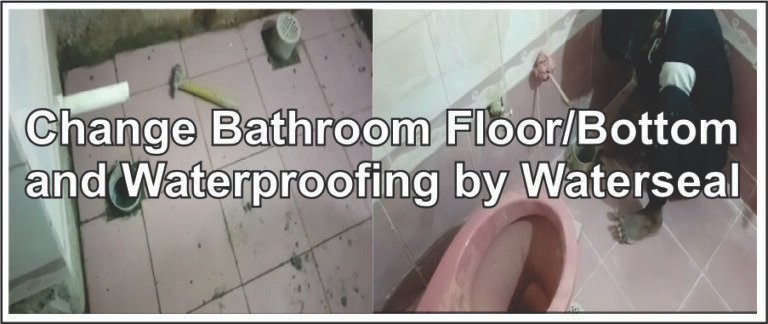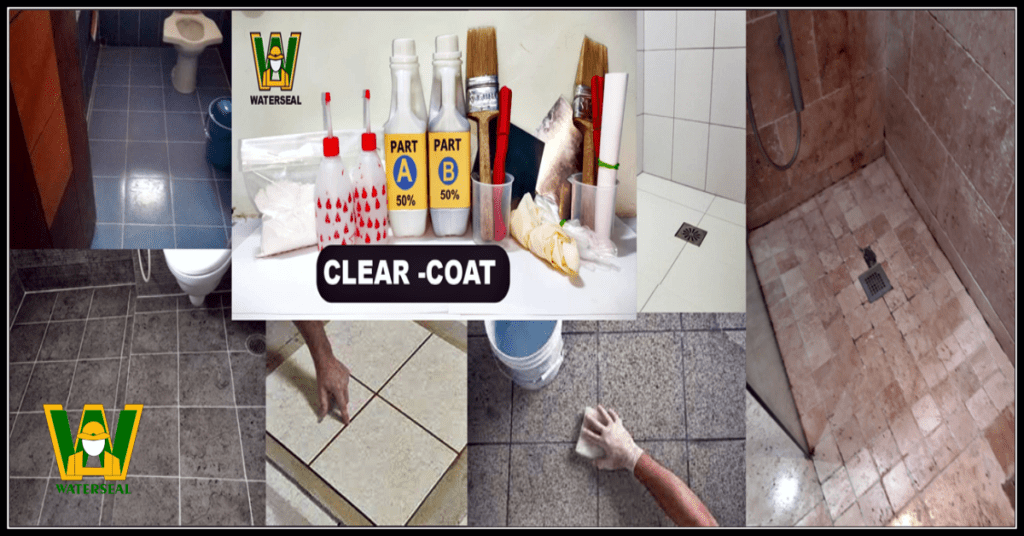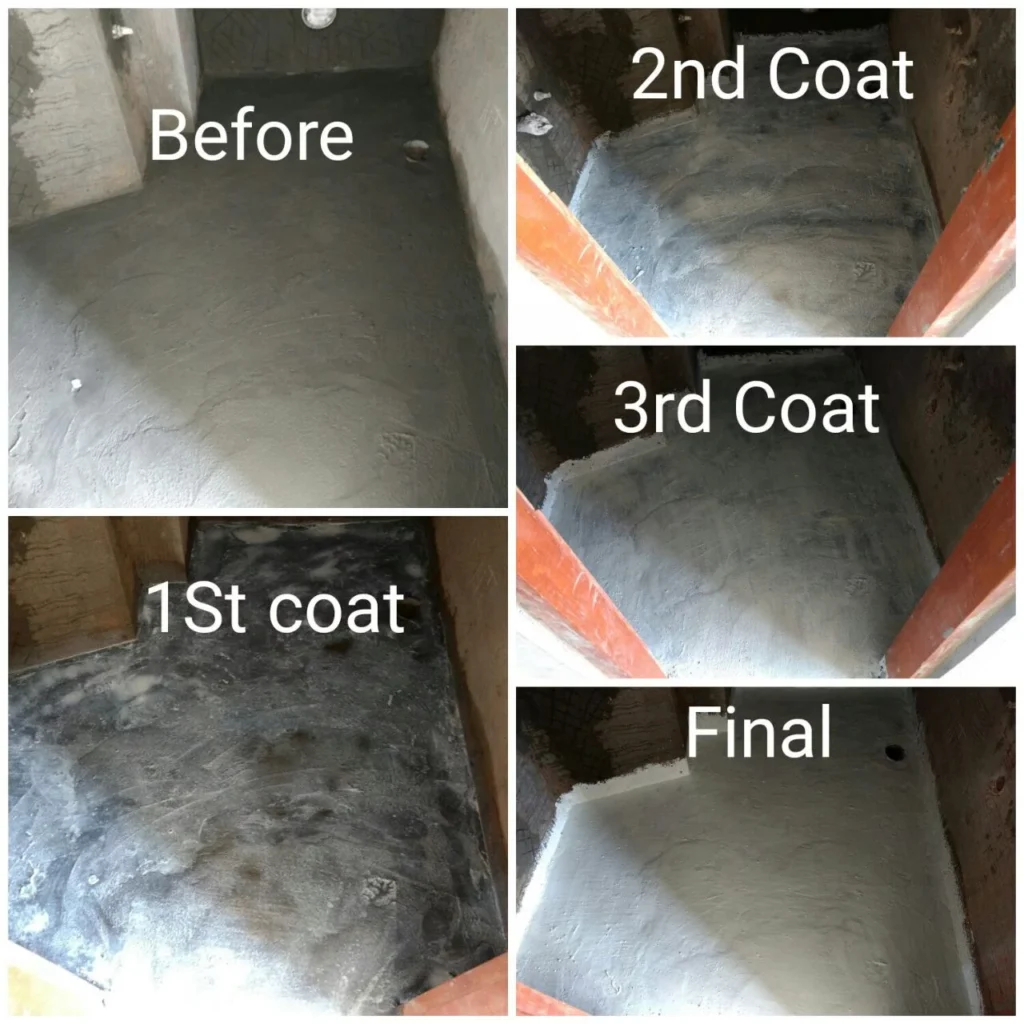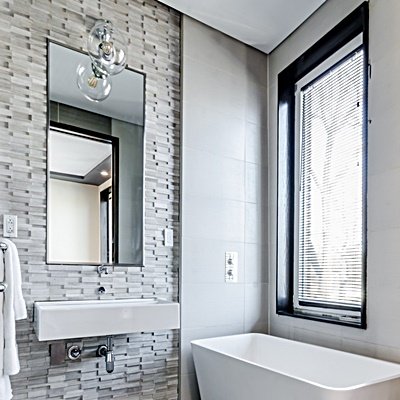Learn about the top four methods to stop bathroom leaks.
 Bathrooms are an essential part of our daily routine and receive a significant amount of use, leading to various problems such as water damage and mold growth. The excessive moisture, steam, condensation, and water splashes can accumulate over time and penetrate your tiles, grout, and walls, causing long-term severe damage if not addressed immediately.
Bathrooms are an essential part of our daily routine and receive a significant amount of use, leading to various problems such as water damage and mold growth. The excessive moisture, steam, condensation, and water splashes can accumulate over time and penetrate your tiles, grout, and walls, causing long-term severe damage if not addressed immediately.
What is Bathroom Waterproofing?
It is imperative to waterproof your bathroom to protect it from moisture seepage, leaks, and other water-related damages. By doing so, you can safeguard your bathroom from potential structural damages while improving its longevity, hygiene, and aesthetic appeal.
Bathroom waterproofing is a crucial process that involves sealing and protecting bathroom surfaces from moisture, water, and dampness. It is an effective method for preventing water seepage into the walls, floors, and ceilings of the bathroom, which can lead to dangerous mold growth and structural damage over time. By waterproofing your bathroom, you can ensure that your bathroom remains dry and free from any water damage. The process of bathroom waterproofing can involve a variety of different techniques and products, including waterproof membranes, sealants, and coatings. By choosing the right method and materials for your bathroom, you can create a water-resistant barrier that will protect your bathroom for years to come.
Introducing the first affordable and time-efficient method to fix a leaky bathroom
What are the most common reasons of water leaks from Bathroom?
Reasons of Bathroom Leakage
First Reason: If not Provided Minimum thickness of RCC slab
Commercial Building: The minimum thickness is approximately 4” inches (100mm) and,
Residential building: the minimum thickness is approximately 6” inches (150mm).
Chocked Drainage
Tiles Joints Leak
Poor Plumbing : Faulty plumbing or connections can cause water to leak from pipes or fittings.Cracks or damage to pipes and hoses can lead to leaks.
Unprofessional Core Filling: If the core filling is also not done professionally, it can lead to further problems. So, it's important to make sure that the Drainage Pipes bottom Core of the bathroom is properly waterproofed to avoid these problems.

"If the bottom of the bathroom is not waterproofed, then many problems are created due to leakages."
1. How to Waterproof the old Bathroom Floor?
Removing Floor Tiles, Check or Change Drainage and Install New Tiles.
Waterproofing of Toilets/Bathrooms – Methods, Materials, and Procedures:
- Removing all tiles from the flooring.
- Replacing all Drainage Pipelines with New Best Quality Pipes and Core Filling.
- Check the new pipeline for any Bathroom Leakage and solve it.
- Applying Waterproof Coatings over the flooring .
- Leveling the Flooring with a new waterproof plaster.
- New tiling is applied for flooring and filling Joints with specially made Admixture.
- After a day of Complete Curing and Drying. the Waterproof bathroom is ready for use.
Old Bathroom Waterproofing Method (How to Change Bathroom Floor/Bottom and Waterproofing) - Video
3. Bathroom Waterproofing without removing tiles

4. New Construction Bathroom Waterproofing with Core

Prevent seepage and leakages in ceilings below the Bathroom floor in future
If you want to keep your bathroom in good shape and prevent any damage below, it is important to take the necessary steps to avoid seepage and leakage. Failure to address these issues can lead to unsightly damp patches or paint peeling on the ceiling below. Unfortunately, there are many factors that can contribute to these problems, including incorrect tiling, gaps between tiles, improper slope, and water seepage through walls.
To avoid these issues, it is highly recommended that you use appropriate products during the construction process that will help prevent these problems from occurring in the first place. You will also need to make sure to seal all your sanitary joints correctly to prevent any water leakage that may cause waterproofing problems. Additionally, it is important to fill any unfilled joints during construction to ensure that there are no possible routes for water to pass through. Taking these precautions will help you keep your bathroom in good condition for years to come.

